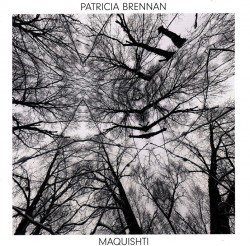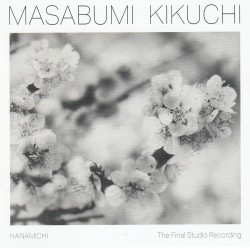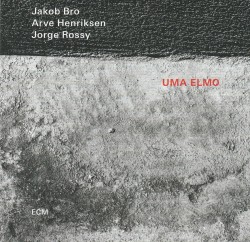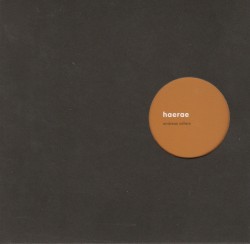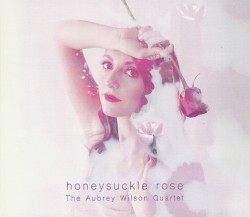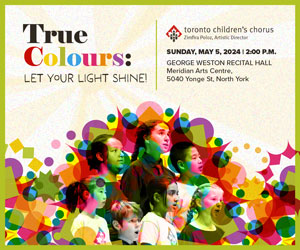Assembled since the first significant 78s were collected in one package, the boxed set has traditionally been used to celebrate important anniversaries or extensive projects. CD collections are the same, with these improvised music sets aurally illuminating various programs.
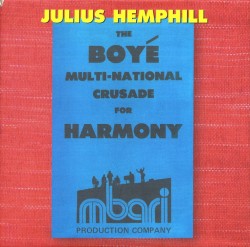 The most meaningful collection is the seven CDs that make up Julius Hemphill The Boyé Mufti-National Crusade for Harmony – Archive Recordings 1977-2007 (New World Records 80825-2 newworldrecords.org). Consisting of 53 previously unreleased tracks, the box presents a full picture of composer and saxophonist Hemphill (1938- 1995), who was a member of the St. Louis Black Artists Group and founder of the World Saxophone Quartet. Hemphill is represented not only by numerous combo sessions with fellow sound innovators, but also by a disc of his chamber music compositions as well as multimedia creations involving solo saxophone forays and spoken word. While other tunes of his are interpreted by pianist Ursula Oppens and the Daedalus String Quartet, a more memorable compositional program on Disc 4 is of two pieces Hemphill conducted played by improvisers using traditional orchestral instruments and without solos. Slotted among Baroque, blues and bop, the tracks include achingly melodic motifs plus timbral extensions into multiphonics and swing that are unique. Roi Boyé Solo and Text is an entire disc dedicated to the vernacular trickster character the saxophonist developed in theatrical presentations where his horns comment on verbalized themes extended with Malinké Elliott’s recitation of the poetry of K.Curtis Lyle. With the rhymes personifying a variety of inner city St. Louis characters from shouting preacher to mumbling hustler, Hemphill’s flute or soprano and alto saxophone lines offer either measured cadences as affirmation or use screech mould, triple tonguing plus the addition of miscellaneous percussion to rhythmically solidify the urban imagery and underline the barbed explosiveness of the situation.
The most meaningful collection is the seven CDs that make up Julius Hemphill The Boyé Mufti-National Crusade for Harmony – Archive Recordings 1977-2007 (New World Records 80825-2 newworldrecords.org). Consisting of 53 previously unreleased tracks, the box presents a full picture of composer and saxophonist Hemphill (1938- 1995), who was a member of the St. Louis Black Artists Group and founder of the World Saxophone Quartet. Hemphill is represented not only by numerous combo sessions with fellow sound innovators, but also by a disc of his chamber music compositions as well as multimedia creations involving solo saxophone forays and spoken word. While other tunes of his are interpreted by pianist Ursula Oppens and the Daedalus String Quartet, a more memorable compositional program on Disc 4 is of two pieces Hemphill conducted played by improvisers using traditional orchestral instruments and without solos. Slotted among Baroque, blues and bop, the tracks include achingly melodic motifs plus timbral extensions into multiphonics and swing that are unique. Roi Boyé Solo and Text is an entire disc dedicated to the vernacular trickster character the saxophonist developed in theatrical presentations where his horns comment on verbalized themes extended with Malinké Elliott’s recitation of the poetry of K.Curtis Lyle. With the rhymes personifying a variety of inner city St. Louis characters from shouting preacher to mumbling hustler, Hemphill’s flute or soprano and alto saxophone lines offer either measured cadences as affirmation or use screech mould, triple tonguing plus the addition of miscellaneous percussion to rhythmically solidify the urban imagery and underline the barbed explosiveness of the situation.
However, it was as an improviser, composer and arranger that Hemphill’s identity was solidified, and these skills are expressed in cultivated and unique fashion involving numerous ensembles on the other five CDs. Hemphill’s best-known associates, bassist Dave Holland and drummer Jack DeJohnette, joined the saxophonist and longtime musical partner, trumpeter Baikida Carroll, in 1979 for one concert. Known for affiliations with Keith Jarrett and Miles Davis, the bassist and drummer easily respond to Hemphill’s music, as percussion rolls and ruffs and stentorian string plucks smack and swipe alongside light-toned grainy brass smears and an unbroken line of reed shrills. Mirrors’ squirming exposition opens up for a jumping tempo-shattering snare-and-cymbal solo without upsetting the piece’s ambulating balance. Meanwhile, the concluding Would Boogie is defined by the title as a drum backbeat; walking bass lines match lockstep horn animation which splinters the theme into atom-sized reed bites and splayed brass flutters and then reconstructs it. This down-home quality is further emphasized with two groups on CD 6 which include electric bassists and guitarists. Pops and splatters from Jerome Harris’ electric bass evolve in tandem with Hemphill’s sax squeaks or flute trills as six duo selections become harsher and more pressurized. A similar intensity is expressed when bop meet blues on Pigskin, as Jack Wilkins’ echoing guitar licks and drummer Michael Carvin’s power backbeat add mainstream swing to the saxophonist’s astringent exploration. One/Waltz/Time+ projects the group’s multiple identities as guitarists Allan Jaffe’s and Nels Cline’s blues-rock twangs and frails connect with Hemphill’s shifting split tones, moving the piece from the hotel ballroom to the honky tonk.
Country blues energy coupled with urban experimentation also enlivens the multiple bands that Hemphill led under different names featured on Discs 1 and 3. Usually including Carroll, Dimples: The Fat Lady on Parade is unique because the trumpeter’s strangled blows and the saxophonist’s foaming glissandi are moderated when joined by John Carter’s nasal clarinet tones. With the woodwind’s gentle trilling taking on the storytelling role, Hemphill’s soprano creates a sweet obbligato. As sprightly harmonies then unite over drummer Alex Cline’s ambulatory beat, the narrative resembles the topsy-turvy echoes of a retreating circus band. Cline and Carroll are part of the trio called The Janus Company on Disc 3 where boppy themes do-si-do among the band members. Spectacular drum rumbles enliven #4 as Hemphill’s supple cries buzz across the sequence while Carroll’s capillary screeches vibrate to a Pop Goes the Weasel burlesque until the two horns finally harmonize. Cellist Abdul Wadud joins the trio for a finger-snapping version of Dogon A.D., one of the saxophonist’s best-known compositions. Including guitar-like frails from Wadud, high-pitched bugling from the trumpet and a hearty drum backbeat, this variant combines a march rhythm, blues notes and splintered multiphonics. Wadud, who was on the saxophonist’s first recording, also partners Hemphill on Disc 2’s six tracks. Exemplary selections such as Syntax and Downstairs demonstrate how much energy and expression two simpatico players can generate. Hemphill’s alto saxophone curls out nearly ceaseless sound variations using techniques that range from Charlie Parker-like brusqueness to extended runs of doits, split tones and flattement. Meanwhile the cellist bends notes to not only propel the beat, but also to twang a pinched continuum that cements jagged detours and tone experiments into a connective narrative.
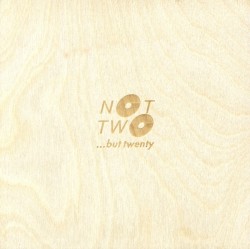 Another box set celebrates not one man’s musical vision but those of 13 musicians and the record label that disseminates their works. After releasing adventurous music for 20 years, in 2018 Krakow’s Not Two label organized a three-day-anniversary celebration in the Polish village of Wleń featuring players who regularly record for it. Not Two … but Twenty Festival (NotTwo MW 1000-2 nottwo.com) is a five-CD box that preserves those performances. They consist of different combinations featuring saxophonists Mikołaj Trzaska of Poland, Peter Brötzmann from Germany, Ken Vandermark from the US and Swede Mats Gustafsson; bassists Barry Guy of the UK, Joëlle Léandre from France and Pole Rafał Mazur; drummers Paal Nilssen-Love from Norway and Zlatko Kaučič from Slovenia; plus Swiss violinist Maya Homburger, American trombonist Steve Swell, Swedish tubist Per-Âke Holmlander and Catalan pianist Agustí Fernández.
Another box set celebrates not one man’s musical vision but those of 13 musicians and the record label that disseminates their works. After releasing adventurous music for 20 years, in 2018 Krakow’s Not Two label organized a three-day-anniversary celebration in the Polish village of Wleń featuring players who regularly record for it. Not Two … but Twenty Festival (NotTwo MW 1000-2 nottwo.com) is a five-CD box that preserves those performances. They consist of different combinations featuring saxophonists Mikołaj Trzaska of Poland, Peter Brötzmann from Germany, Ken Vandermark from the US and Swede Mats Gustafsson; bassists Barry Guy of the UK, Joëlle Léandre from France and Pole Rafał Mazur; drummers Paal Nilssen-Love from Norway and Zlatko Kaučič from Slovenia; plus Swiss violinist Maya Homburger, American trombonist Steve Swell, Swedish tubist Per-Âke Holmlander and Catalan pianist Agustí Fernández.
Ranging in length from four minutes to over 20, none of the 28 tracks disappoint, with a few more outstanding than others. Demonstrating inventive flair for instance, Léandre is in her element whether it’s in a trio with Swell and Fernandez, a quartet with Guy, Kaučič and Swell or going one-on-one with Guy or Trzaska. The quartet set demonstrates that resonating pumps from two sophisticated bass players can stretch enough horizontal and splayed patterns to either provoke or accompany as many crashing percussion or slurring tailgate brassy smears as the others can produce. Swell’s almost ceaseless scooping tones and Fernández’s metronomic keyboard vibrations set up a trio challenge at even greater length, but Léandre’s concentrated string stropping with tandem vocalizing is so powerful and percussive that her string buzzing consolidates the exposition from allegro interaction to andante solidity. Solo, her string traction is such that she can create speed-of-light spiccato jolts from the bass’ highest-pitched strings with the same textural innovation with which she pushes the narrative with bottom-aimed sul tasto stops, all the while spanking the instrument’s wood and verbally gulping and crowing additional onomatopoetic colour. Her duet with Guy shows both in top form(s) as they harmonize or test one another, constantly switching arco and pizzicato roles, splintering shrill notes or modulating deeper pitched ones, so intermittent melodies share space with pressurized movement.
Baritone saxophonist Gustafsson constantly challenges clarinetist Vandermark or alto saxophonist Trzaska in their meetings, but in each instance the reeds are part of an additional kaleidoscopic brass or percussion-affiliated canvas. With the clarinetist, contrapuntal reed trills and bites become shriller and more dissonant as Swell and Holmlander spread cascading burbles below them until all four reach screeching concordance. With Trzaska, Mazur and the tubist creating a continuum, double saxophone flutters can turn into barely there tongue slaps and whistles as flatulent brass quakes and sliding bass string crackles intersect to propel the narrative. Meanwhile, the Brötzmann, Guy and Kaučič meeting can be contrasted with the Gustafsson, Mazur and Nilssen-Love trio. The German saxist’s distinctive nephritic cry is met by the drummer’s calculated splashes and shatters as the bassist keeps the program chromatic. Each time the saxophonist spears unexpected split tones from his horn, Guy produces connective stops while adding further grainy character along with Kaučič’s cymbal rubs. But when Guy’s subsequently powerful string pulls threaten to unbalance the exposition and push it to dissonance, it’s Brötzmann’s unexpected elaboration of a snatch of Sentimental Journey that launches the three into a near-swinging finale.
There’s no comparable respite with the other trio whose combination of reed glossolalia, sluicing string runs from Mazur and thumping drumming suggest heavy metal as much as free jazz. When Nilssen-Love repeatedly pummels his kit and the bassist strums rhythmic ambulation, Gustafsson’s timbral screeches and basso honks rest comfortably among the vibrations below. The set is appropriately concluded with a brief finale with all the musicians expressing group excitement from, and appreciation of, the proceedings as they spill out an organized free-for-all that humorously and abruptly ends. However the standout performance is a four-part dialogue among Fernández, Guy, Mazur and Kaučič. Creating a kinetic yet horizontal pulse, the bass work moors the exposition as the drummer decorates it with cymbal colours and drum pops while the pianist tinkles out a floating canter with sharper theme variations. The storytelling is further enshrined as kinetic piano lines join wide bass string pulses to slow down the allegro narrative to a cumulative responsive finale.
Some innovating musicians need and deserve more than a single disc with which to express their far-ranging talents. These box sets show this can be effectively done.
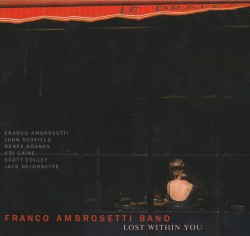 Lost Within You
Lost Within You

